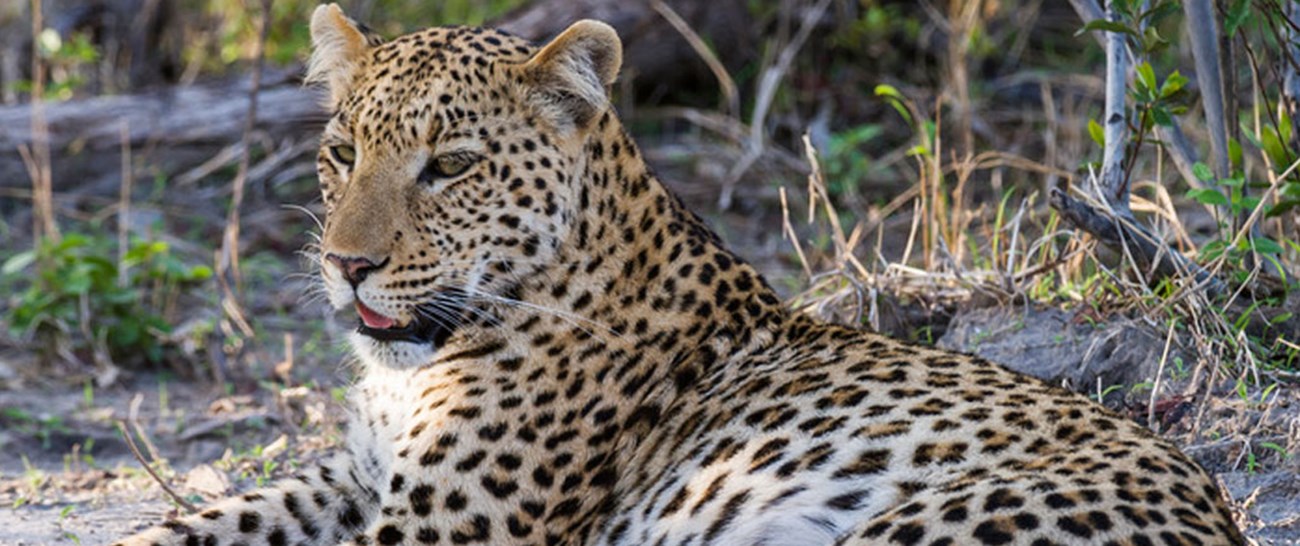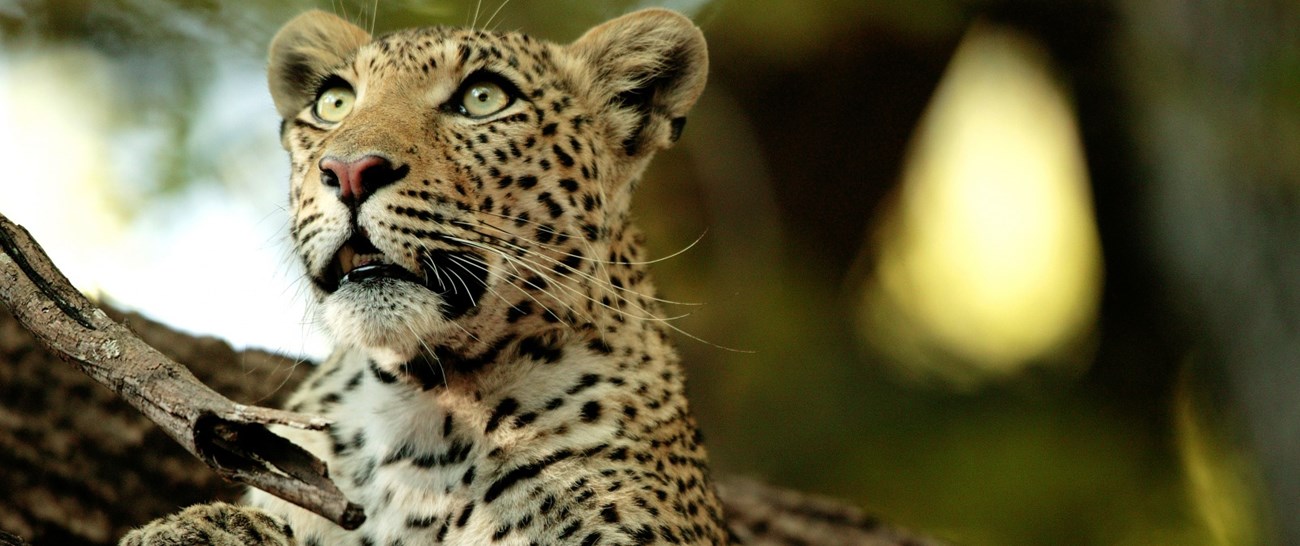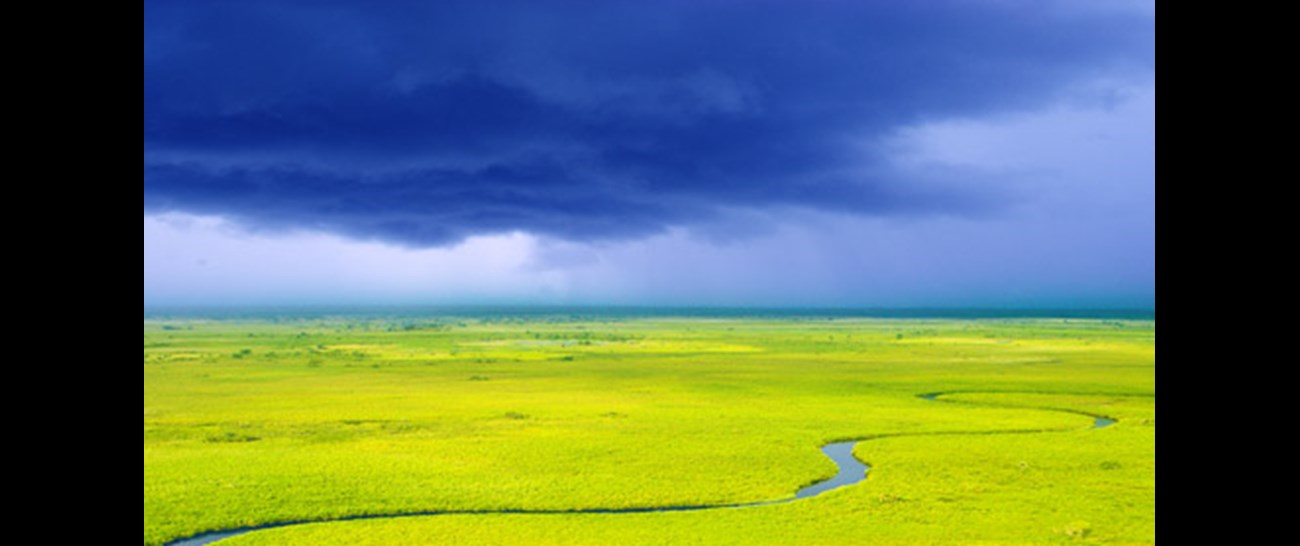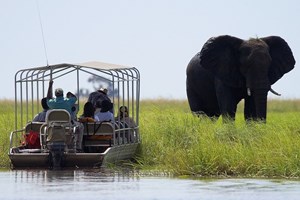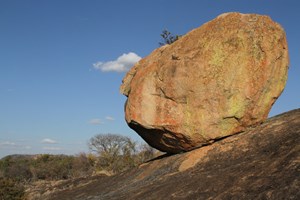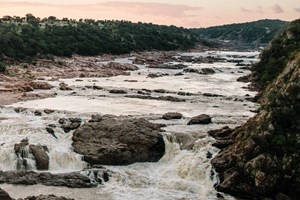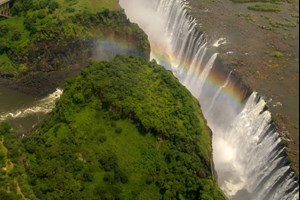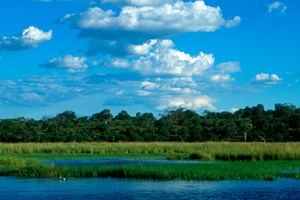 Okavango Delta
Okavango Delta
The Okavango Delta is an area of staggering pristine beauty offering beautiful ecosystems and the chance for the best wildlife safaris in Africa. It is one of the world's largest inland delta systems. The floodwater of the Okavango river gushes down through the Angola highlands through the northwestern part of Botswana and thins out over the Kalahari desert forming around 15,000 km2 of an enchanting delta system. This is an annual occurrence from May through July and there is quiet period October onward. This cycle of events results in a versatile nature of the delta system and hence there is a constant wildlife activity around this place throughout the year. It causes the migration of thousands of animals in addition to more than 400 species of birds and 1000 species of plants! This magnificence of the Delta has made it one of the Natural Seven Wonders of Africa.
The Okavango Delta is made up of two parts - the Moremi game reserve and a number of private reserves. The Moremi Game Reserve is a public place consisting of the Chief's Island where many self-drive tourists visit. The Chief's Island is where safari-related activities are permitted. The private reserves offer accommodation in small camps and exclusive activities to the resident guests who fly in to these camps by air in light aircraft from main airports at Maun and Kasane.
Guest numbers are usually low and the services are top class offering a low-impact but high quality personalized experience to one and all. Also, since these are private, the guides are allowed some freedom during safaris. For e.g. they are allowed to do night-safaris with the guests and are allowed to move off course when spotting any wildlife. They do this with utmost caution and high expertise.
Also offered are walking safaris not allowed in the national parks. Also one of the good ways to explore the Okavango is by horseback.
An Okavango Delta safari is a highly unusual and exciting because tourists haven't usually experienced the feeling of sitting in a traditional dug out canoe, locally called a 'mokoro' and watching the wild animals at close quarters.
Waddling through the clear blue waters, you get this mystical feeling of being in a faraway land. Fish swim besides you shining in the heat while birds of prey await their time at a distance. Walking on the islands with an expert guide or exploring on horseback will take you real close to the wildlife. It is once in a lifetime experience to do this in the wild. This is the real Africa!
The wildlife is plentiful and gorgeous. With the reintroduction of rhino, it is a good place to get the Big Five out of your system! There are elephants all year round along with big herds of buffalo, giraffe, impala, zebra, kudu, waterbuck, bushbuck, reedbuck, tseesebe and many more. The predators include lion, cheetah, leopards frequently spotted at dusk, hyena and wild dog.
Your guide will very likely also spot a large variety of birds, many which are particular to their preferred habitats. There are egrets, cranes, hornbills, eagles, kingfishers, jacanas, firefinches, storks, ibis, owls and coucals. You might also spot otters swimming across the waters in certain places. On night drives you might be lucky to find civets, servals, porcupines, honey badger and white tailed mongoose.
May to October is the dry season whence there are huge numbers of animals congregating towards the delta in search of water and food. In the 'green' season from December to April, most migrants have moved out leaving the residents behind along with a lot of baby animals and beautiful surroundings. This is also a good time to spot the nesting of few migrant birds.
Most dry part of the delta is dominated by mopane woodland. Other than mopane, the papyrus and reed rafts make up most of the vegetation and during the flood season, they float on the water giving shelter to crocodiles in the gap between plants and river beds.
The camps in Okavango Delta are categorised as 'wet', 'dry' or 'mixed' according to the nature of the habitat near which they are situated. The wet camps offer mokoro safaris when the flow of the river is subtle and boating safaris when the river is in flood. They are set near very picturesque locations and can offer great wildlife views.
The dry camps offer land-based safaris and are great to view big game and predators. The mixed camps, as the name suggests, offer walking, driving and boating safaris since they are located in areas with not much flooding but with enough dry areas to do dry camp activities.
There are nineteen sub-areas in Okavango each having it's own camps so there is lot to choose from when thinking about a best-suitable itinerary for any guest. The type of camp that's chosen will be in accord with the guest's interest, time of the year and budget. Hence it is possible to mix and match and opt for an amazing holiday at 2 or 3 different camps that might also be connected via the waterway.
The different sub-areas or concessions as they are called are: Abu, Chitabe, Duba Plains, Gudigwa, Gunns, Jao Flats, Khwai River, Kwara, Moklowane, Moremi Central (heart of the delta), Moremi Mopane, Nxabega, Okavango Mababe, Okavango Selinda South, Ranns, Shinde, Stanleys, Starlings and Vumbura.
